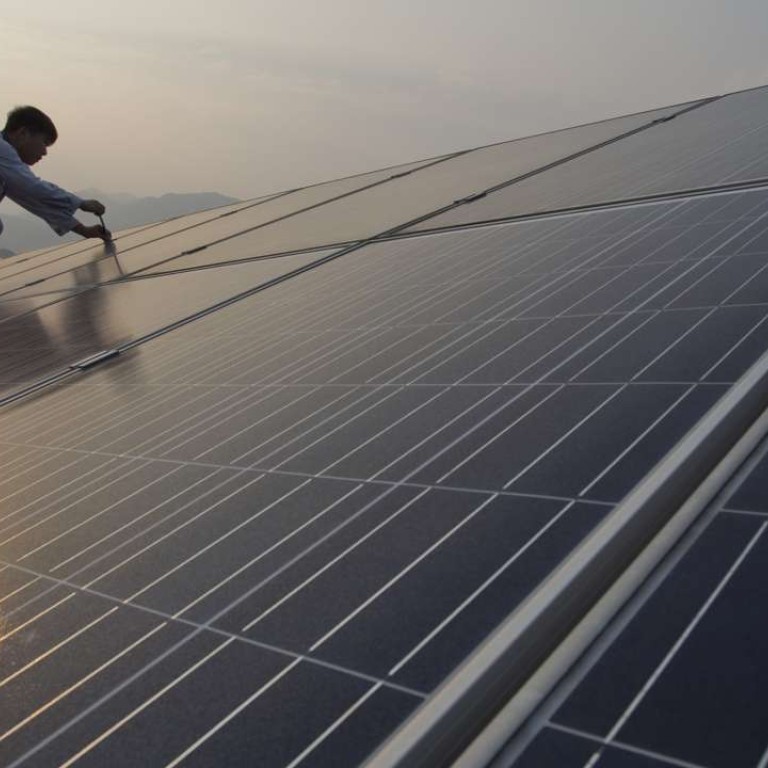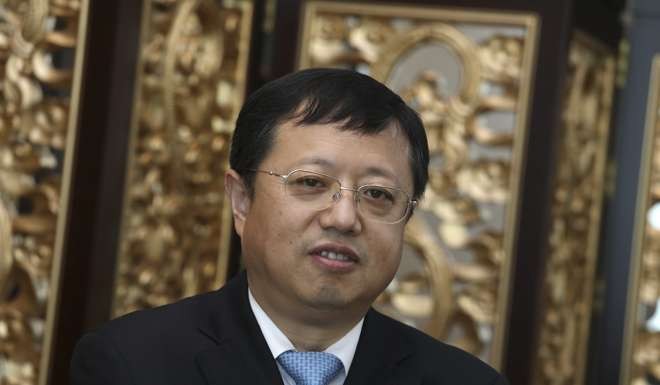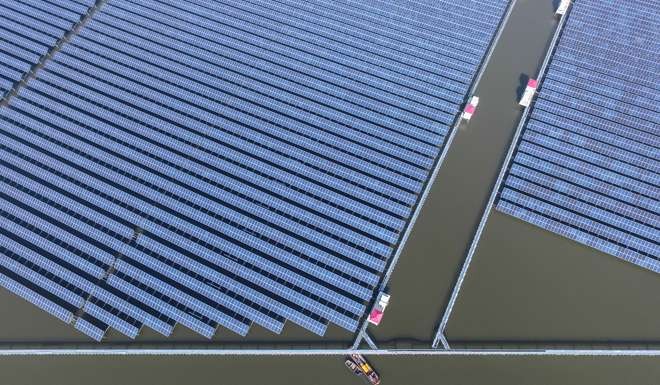
Exclusive | China’s Huadian Fuxin looks overseas for new clean energy investments
Energy group Huadian Fuxin is scouting overseas projects for growth amid slumping industry profits, and dimming opportunities in China’s capacity-glutted market
Huadian Fuxin Energy, the renewable energy unit of state-owned power generation giant China Huadian Group, is looking towards new projects in Indonesia and Bangladesh, as it struggles with domestic power capacity oversupply and weakened industry profitability.
Beijing-based Fuxin has also been in discussions on potential opportunities in emerging markets in Eastern Europe as well as Iraq and Iran in the Middle East as part of efforts to sustain profit growth, according to Fuxin chairman Fang Zheng.
“We have just started working on overseas expansion so our project reserve is not substantial,” he told the South China Morning Post.
“In South Asia and Southeast Asia, there are a lot of power shortages, whereas power infrastructure in Eastern European nations are old and need to be renewed.”
He said Fuxin is in talks to build a hydro power project in Indonesia and a solar farm project in Bangladesh.
We thought we should try new-build projects since we have the human resources and technical capabilities that can be deployed abroad
Fuxin is not unique in pursing overseas opportunities. China General Nuclear Power, the nation’s largest nuclear power projects developer, has clinched a slew of deals by winning new projects bids and making acquisitions in Europe and Africa in the wind and solar power segments.
China Three Gorges, developer of the nation’s largest hydro power project, has acquired major hydro projects in South America.
The focus of Fuxin’s overseas strategy has previously been to acquire existing projects in western Europe, given the lower investment risk.
“But through discussions, we recently realised profitability of such assets are relatively low since the regulatory frameworks there do not allow for high profits,” he said.
“We are not chasing very high levels of absolute profit, but once you are negotiating to buy existing projects, the room for profits are being squeezed.”

The company has since switched its overseas focus to bidding for greenfield projects, amid worsening over-capacity of the domestic Chinese market, which was also growing more competitive thanks to liberalisation of state set power tariffs.
“We thought we should try new-build projects since we have the human resources and technical capabilities that can be deployed abroad, and the central government has a strategy to digest excess domestic capacities by tapping into overseas markets.”
Given currency and operating risks in unfamiliar markets, Fang said Fuxin has four requirements that all its overseas projects must meet.
These include having secured a long-term power sales and purchase agreement, a US dollar-settled revenue model, sovereign guarantees to guard against risks such as a change of political leadership in the project nation, and freedom of profit repatriation.
Despite having a new overseas strategy, Fuxin’s primary source of growth remains in the domestic market, where existing projects in the pipeline are expected to see its total installed capacity grow to between 22 giga-watts and 25GW by 2020 from 15GW currently, Fang said.
They include 4GW of solar and wind farms, 1.2GW of coal-fired plants, 3.2GW of natural gas-fired power plants, 0.6GW of hydro projects and 1.2GW of coal-fired ones.

Fang said gas-fired projects stand out from other cleaner energy power segments in terms of growth potential in the next few years.
He attributes this to the higher energy utilisation efficiency of gas-fired projects that produce power, heat and cooling for industrial parks. Such projects are more efficient since waste heat in the power generation process is recycled.
He expects new wind and solar projects to be constrained by power grid bottlenecks, reduction and arrears in subsidy payments, while new hydro and nuclear projects will also be measured given environmental impact concerns.
Fuxin, Fujian province’s largest hydro power producer, will likely see a major decline in hydro power output this year with plant utilisation possibly falling below 4,000 hours from over 5,000 hours last year, which saw unusually heavy rainfall, Fang said.
But its coal-fired power plants are expected to rebound after a 45 per cent decline last year as hydro plants have precedence over coal-fired power in dispatch to the power grid.
“Our coal-fired power business was basically only breaking even last year,” he said.
The curtailment rate of its wind farms – the amount of power generated but not dispatched to the grid due to bottlenecks and excess power supply – averaged over 20 per cent last year, compared to 19 per cent in 2015.
Fuxin suffered a higher curtailment rate than the industry average given its higher project exposure to the Gansu, Xinjiang and northeast China market which suffered some of the worst wind curtailments in the nation.
A policy by Beijing to guarantee minimum guaranteed utilisation hours for wind farms in these worst hit regions was not implemented properly at the local level amid severe over-capacity of the entire power industry, Fang noted.
The majority of the company’s planned wind farms are located in southern, central and eastern China where curtailment rates are smaller, he added.

